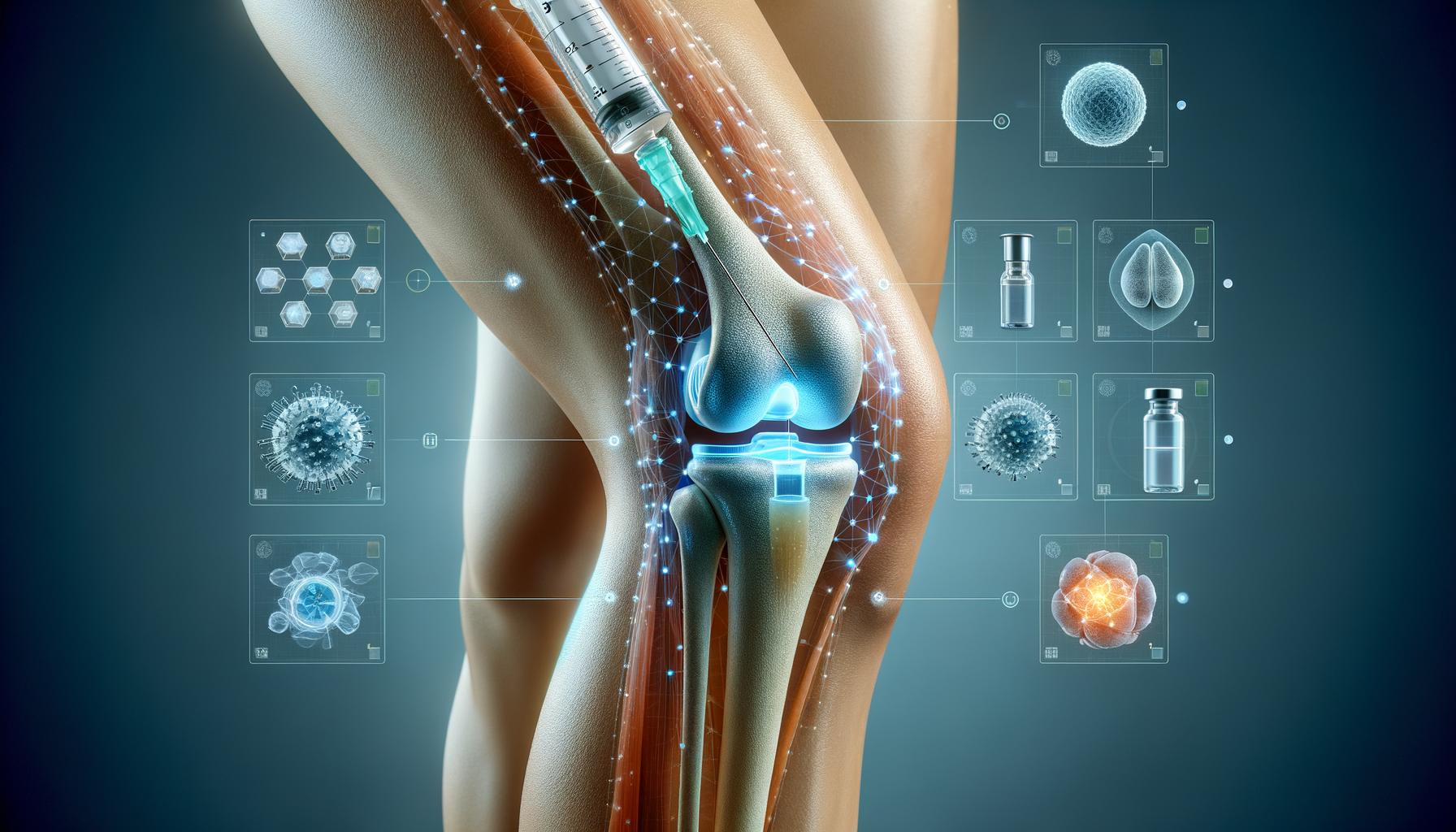Introduction to Knee Gel Injections
Knee pain is a common issue that can significantly impact mobility and quality of life, particularly for those suffering from arthritis. Knee gel injections, also known as viscosupplementation, offer a promising solution for enhancing mobility and reducing discomfort. These injections involve injecting a gel-like substance into the knee joint to supplement the natural synovial fluid, which lubricates and cushions the joint. This treatment is gaining recognition for its potential to provide relief for those who have not found success with traditional pain management methods.
The importance of knee gel injections lies in their ability to address a common issue faced by many individuals. As the population ages, the prevalence of arthritis and joint pain is increasing, making effective treatments more crucial than ever. Knee gel injections offer a non-surgical option that can delay or even prevent the need for more invasive procedures, such as knee replacement surgery.
How Knee Gel Injections Work
Knee gel injections work by mimicking the natural synovial fluid in the knee joint. This fluid is essential for joint health as it acts as a lubricant and shock absorber. In individuals with arthritis, the quality and quantity of this fluid can decrease, leading to increased friction, pain, and reduced mobility. By injecting a synthetic version of this fluid, knee gel injections help to restore the joint’s natural environment, reducing pain and improving function.
The procedure is relatively straightforward. A healthcare provider will inject the gel directly into the knee joint using a fine needle. The process is quick, typically taking only a few minutes, and can be performed in a doctor’s office. Patients may experience some immediate relief, but the full benefits are usually felt after a few weeks as the gel integrates with the joint fluid.
While knee gel injections are generally safe, they may not be suitable for everyone. Patients should discuss their medical history and any potential allergies with their healthcare provider to determine if this treatment is appropriate for them.
Benefits of Knee Gel Injections
The benefits of knee gel injections are numerous, making them an attractive option for those seeking relief from knee pain. One of the primary advantages is the non-invasive nature of the treatment. Unlike surgery, knee gel injections do not require significant downtime, allowing patients to return to their daily activities more quickly.
Another benefit is the potential for long-lasting relief. While individual results may vary, many patients report significant improvements in pain and mobility for several months following the injections. This can lead to a better quality of life and increased participation in physical activities.
Additionally, knee gel injections can be used in conjunction with other treatments, such as physical therapy or pain medication, to enhance overall results. This versatility makes them a valuable component of a comprehensive pain management plan.
Potential Risks and Considerations
While knee gel injections offer many benefits, it is important to consider potential risks and limitations. As with any medical procedure, there is a risk of side effects, although these are generally mild and temporary. Common side effects include swelling, pain at the injection site, and mild bruising. In rare cases, more serious complications such as infection or allergic reactions can occur.
Patients should also be aware that knee gel injections may not provide the same level of relief for everyone. Factors such as the severity of arthritis, overall health, and lifestyle can influence the effectiveness of the treatment. It is crucial for patients to have realistic expectations and to discuss potential outcomes with their healthcare provider.
Moreover, knee gel injections are not a cure for arthritis. While they can alleviate symptoms and improve mobility, they do not address the underlying causes of joint degeneration. Patients should continue to follow a comprehensive treatment plan that includes lifestyle modifications, exercise, and other therapies as recommended by their healthcare provider.
Conclusion: Is Knee Gel Injection Right for You?
Deciding whether knee gel injections are the right choice involves careful consideration of individual needs and circumstances. For those who have not found relief with conventional treatments, knee gel injections offer a promising alternative that can enhance mobility and reduce pain. However, it is essential to weigh the potential benefits against the risks and to have an open discussion with a healthcare provider.
Ultimately, knee gel injections can be a valuable tool in managing knee pain and improving quality of life. By providing a non-surgical option that enhances joint function, they empower patients to take control of their health and mobility. Whether you are an active individual looking to maintain your lifestyle or someone seeking relief from chronic pain, knee gel injections may offer the solution you need to reclaim your mobility.




Leave a Reply